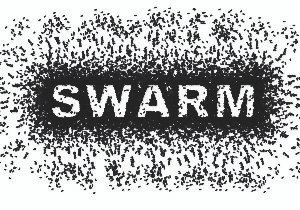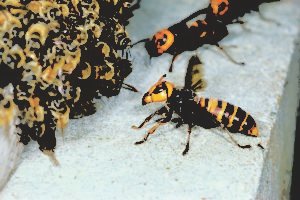
Honeybees, hornets and army ants
Most of us have been stung by a bee or an ant. And those of us, who haven’t yet undergone the experience, just make sure you don’t come across either of the hunters. All we know about these tiny creatures is that their sting can give a burning sensation to any species living on the face of the earth.
However, if we dig deeper, they are more or less like us. They can feel fear, pain, hunger and they can kill to defend their territory. Their behaviours aren’t much different than the other creatures in the animal kingdom. They store food to tide over natural calamities and harsh weather; they share the workload, and they fight in different patterns –mostly determined by their body strengths and weaknesses.
The animal kingdom is vast, and there are too many secrets to be unearthed in one lifetime. Here, however, we will resign ourselves to the examination of a couple of extremely interesting cases, beginning with how honey bees deal with the menace of hornets.
Honeybees and Hornets
Hornets are large predators as compared to their small prey, honeybees. However, the strategy of ambush turns the tables.
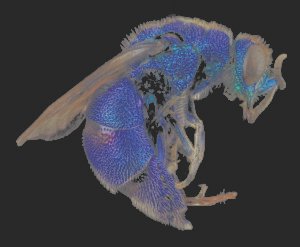
The ambush is a military tactic in which the combatants (the ambushers) hide and wait for the enemy to pass close to where they are hiding. Once they do, they are taken by surprise. With the advantage of concealment and the element of surprise on their side, the ambushers pounce on the enemy. The result is a huge success with a minimum loss for the ambushers. A single well-armed and concealed combatant, theoretically speaking, could successfully ambush a large group of enemy troops.
In human history, ambushes go as far back as two million years, which suggests that in animal history, its traces would be even older. From the recorded history we learn of Hannibal Barca (247-181 BC), a great Carthaginian general whose tactics of ambush are still unmatched.

Coming back to the story of the size of hornets, a hornet can grow 45 to 55 mm in length and have a wingspan of around 75 mm. But that is not all. Its stinger, which contains potent venom, can grow to a length of 6 mm. A queen hornet can grow even more in size, but it can hardly ever go on a hunt. She is continually mating and producing eggs: a queen can produce up to 100 eggs per day. While the sterile females attend to the queen, other hornets guard the nests as well as go on hunting. Most of the time, they hunt singly.

On the contrary, the honey bee is a plump insect with a body length of 12 to 16 mm for workers and a bodyweight of around a tenth of a gram. It can sting only once after which it dies. It is a weapon which is used as a last resort. Then, how do they fight the hornet?
Honeybees have another potent weapon, and they use it only when they lay an ambush.
If a hornet comes across a hive of honeybees, some exciting things happen. The event unveils many tactics and strategies of animal fighting.
When the honeybee guards spot a hornet around their hive, they raise the alarm. After that, only a few guards remain at the gates; the rest sneak inside. Meanwhile, the other bees, which form the second line of defence, wall-up the tunnel with their bodies—the sight is amazing!
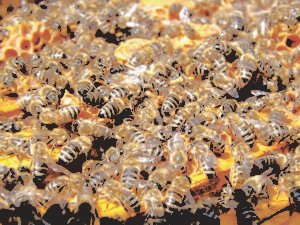
The hornet decapitates the bees at the gates and crawls inside. A hornet can slaughter an entire hive –comprising 30,000 bees –in just three hours. The sight of so many bees together is too appetizing for the hornet to think of calling for reinforcements. The hornet moves forward, decapitating one bee after another until it is in the middle of the hive. And in a jiffy, over 500 bees cluster around it, locking it in the middle of a buzzing ball of bees. The beating of the wings raises the temperature in the core of this ball of bees in no time. A honeybee can beat its wings 11,400 times a minute. The hornet in the middle of the fireball is wholly resigned to its fate, completely immobile. However, this is a dangerous game. The hornet can tolerate a temperature of 116 ⁰C, while the bees can endure 122 ⁰C. There is only a gap of six degrees. The bees have to be right on the money, or their comrades closest to the hornet get roasted with it. But most of the time, they are highly accurate and in just ten minutes, the hornet gets roasted. No sooner is the hornet dead than the honeybees start eating it up. Every bee starts cleaning the den until no trace of hornet is left on the surface, not even its scent that could draw its family members to the hive.
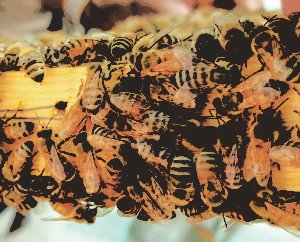
The bees return to their jobs triumphant and content. Thus the swarm strategy helps the bees in eliminating a foe much stronger than any individual bee. Why die with the hornet by using sting and not continue living by using a clever and highly effective stratagem?
Army Ants
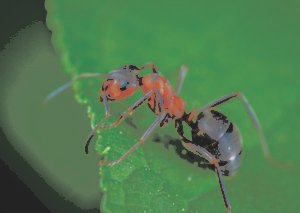
Due to their forceful predatory ‘raids,’ the name “Army Ant” is applied to over 200 ant species. They form their temporary nests out of their bodies by interlocking their legs and creating a web-like structure.
Queen
Army ants have only one queen, the mother of all. It has a large gaster and an extended cylindrical abdomen. It produces around 3-4 million eggs per month. In addition to being wingless, it is usually blind but may sometimes possess vestigial eyes. After every five years, the queen is renewed.
Workers
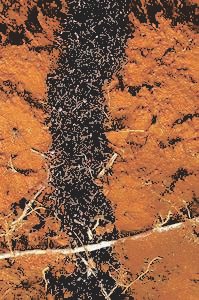
These are usually blind, but sometimes they do possess compound eyes with a single lens. The worker caste generally consists of sterile female ants that guard and attend to the queen. Besides, they are the ones who select both the queen and the male mate. The aspiring queens have to fight in a kind of a tournament with two groups till a finalist remains from each group. Then the remaining two fights and the one that survives becomes the queen. For males to access the queen and mate with her, they must run through the workers in the colony. Males that are favoured are superficially similar in size and shape to the queen.
Soldiers

The composition of soldiers is based on body size and the strength of the mandibles. The older soldiers have larger heads and harder mandibles than the younger ones. Besides protecting the colony, they transport the heaviest loads to the nest.
Males
Males, with their highly improved mandibles, 13 segment-antennae, unusual genitalia, and large abdomens, are larger in size than the other ants. Also, they have wings which make them resemble wasps. Born as part of a sexual brood, they fly off in quest of a queen to mate with. If they seek to mate with the incumbent queen, the workers cut off their wings to accommodate the larger ones for mating.
Raids

A raid is a rapid surprise attack on an enemy by troops, aircraft, or other armed forces. A military tactic which has a specific purpose, raiding is not usually intended to capture and hold a location. Instead, it aims at finishing the task quickly and retreating to a previous defended position before the enemy forces begin to respond with a counter-attack. In irregular warfare, employed by warriors and guerrilla fighters, raiding has always proven a standard tactic.
Army Ant Raiding
Army ants have a broader spectrum of prey than other raiding species. From earthworms and larvae, turtle eggs and birds, other ants and wasps, to bird eggs and oily seeds, army ants consume one and all. Though they prey on vertebrates too, that undesired kill is left to the scavengers accompanying the swarms. A colony of army ants can consume 500,000 prey animals in a day and can transport 3000 prey items per hour to feed the 15 million workers of the colony.
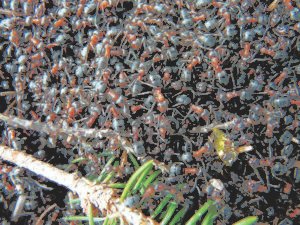
When they raid, the trails can be over 20 meters wide and 100 meters long. They attack in hundreds of thousands and can kill prey 100 times their body size. However, their social formation is such that they don’t have any leaders. Every member does its own work, and there is barely any evidence of conflict.
From the centre point of their temporary nest, they raid in one direction. After the population of the prey gets scarce on that side, they move to the other direction. The route is changed every day until the circle is completed. After that, they leave the place and hence the temporary nest.
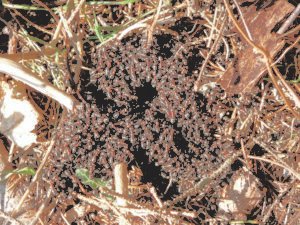
Once they find prey, they send chemical signals through their pheromones which lead the swarms to the hunt. They kill by sheer numbers. Their most potent weapon is the chemical signal that helps them work together.
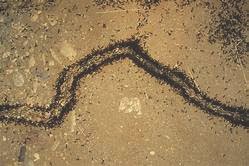
They just rip apart their prey and take it back to their nest. They stay on the path with the help of pheromone signals. The trail is split into two distinct regions depending on whether the concentration of pheromones is high or low. The returning ants will occupy the central lane where the level of pheromones is high, and the outbound ants, the outer two lanes.
Army ants do not possess stealth as crocodiles do; they don’t have the eyes and speed of Falcons; their secret lies in their swarms and social organisation.
